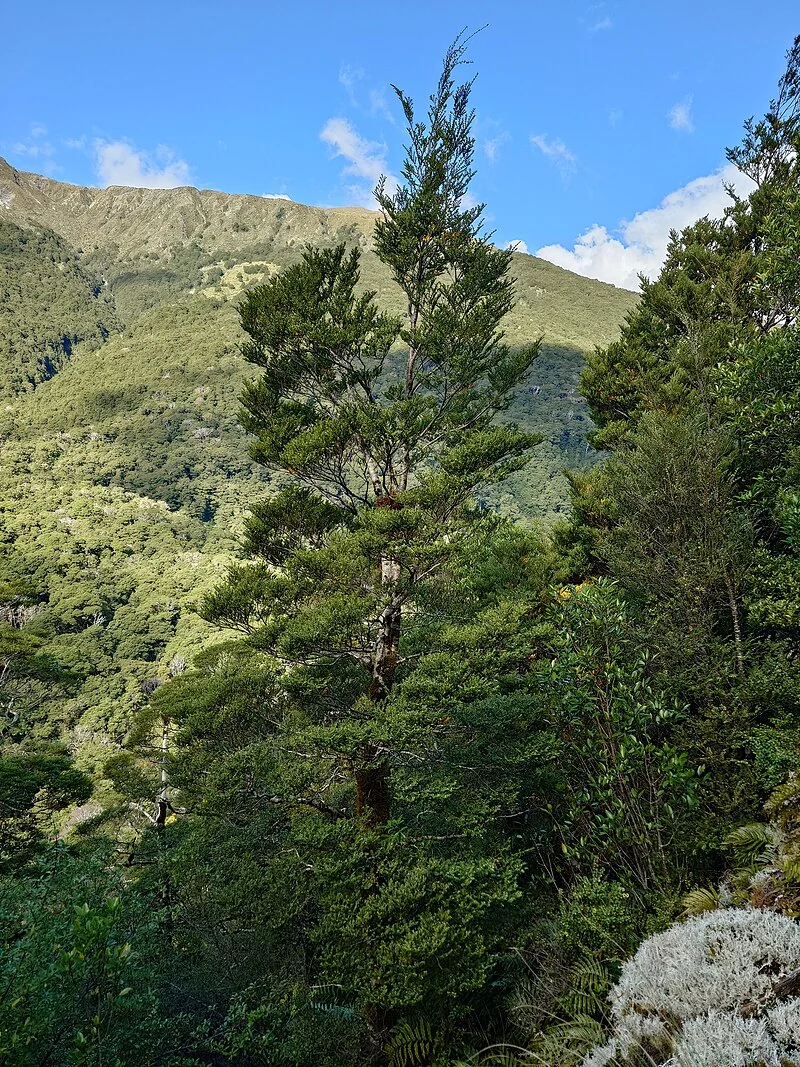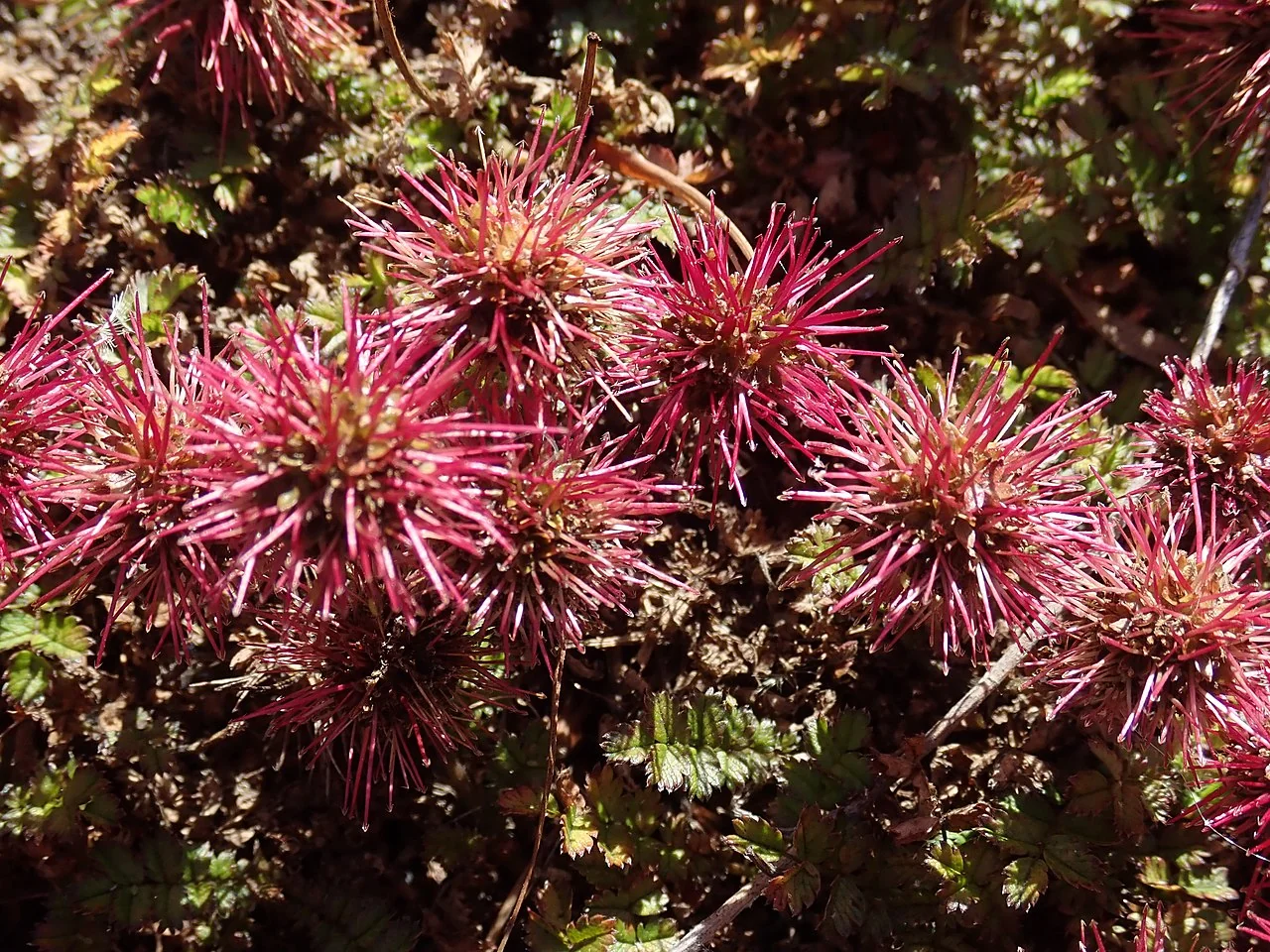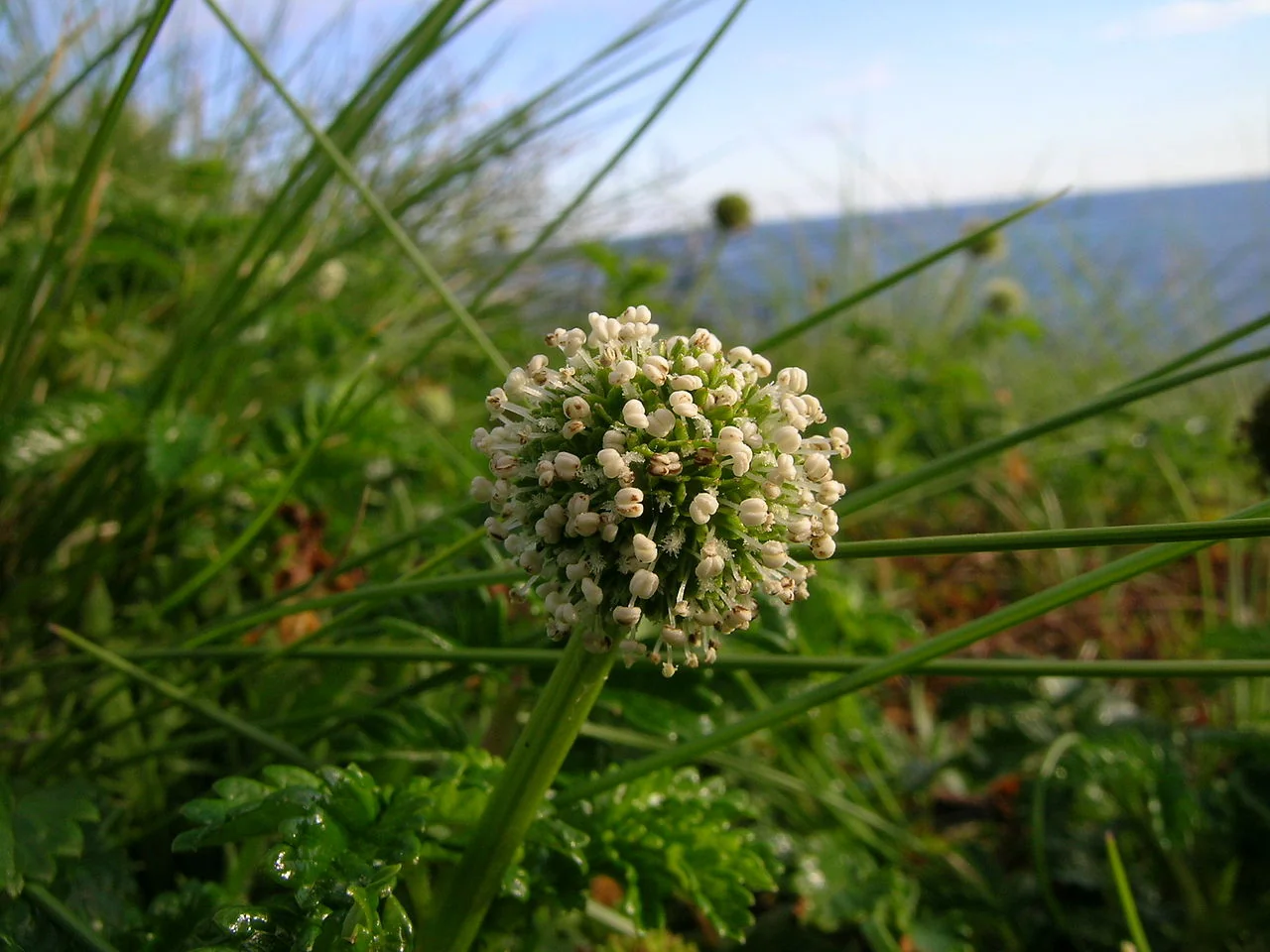
Silver Beech
Lophozonia menziesii
Silver Beech, known as Tawhai rauriki in te reo Māori, is a graceful evergreen tree reaching up to 30 meters tall with distinctive silver-grey bark and small oval leaves that turn brilliant golden-yellow in autumn. This hardy species is the only New Zealand beech not affected by scale insects, making it particularly valuable for both ecological and garden settings. Found throughout cool temperate and montane regions, it creates spectacular autumn displays and provides important habitat for native wildlife in New Zealand's native trees .

Plant Description
Botanical Features
Silver Beech ( Lophozonia menziesii ), also known as Tawhai rauriki, is an evergreen tree endemic to New Zealand. It is a tall, magnificent tree that can reach heights of up to 30 meters with a trunk diameter of up to 1-2 meters. Its distinctive name comes from its smooth, silvery-grey bark, which can develop orange vertical fissures and ultimately crack into shallow scales as it matures. The leaves are small, thick, glossy deep green, oval-shaped, and often have rounded teeth, sometimes with tiny, hairy pockets called domatia on the underside. It is found in cool, temperate forests throughout New Zealand, particularly in the South Island, but also in the North Island from Thames southward. It thrives in moist, well-drained soils and is well-adapted to withstand harsh winter conditions, tolerating frost and snow.
Quick Facts
Quick Facts Overview
| Scientific Name | Lophozonia Menziesii |
|---|---|
| Height | 20-30 meters (subalpine forms to 12 m) |
| Spread | 12-20 meters |
| Water Needs | High (requires consistent moisture) |
| Light | Full sun to partial shade |
| Frost Tolerance | Very high (hardy to -15°C) |
| Salt Tolerance | Low |
| Growth Rate | Moderate |
| Lifespan | Up to 600 years |
Climate Best Suited to
Silver Beech thrives in cool, moist climates with high rainfall and moderate temperatures. It naturally occurs from sea level to 1,280 meters elevation, preferring montane and subalpine environments. This species requires cooler conditions than other beeches and performs best in areas with reliable moisture and protection from extreme heat.
Regional Suitability
| Whangārei | Ideal |
| Auckland | Ideal |
| Hamilton | Suitable |
| Rotorua | Suitable |
| Tauranga | Ideal |
| Gisborne | Ideal |
| New Plymouth | Ideal |
| Whanganui | Ideal |
| Palmerston North | Suitable |
| Napier | Ideal |
| Wellington | Ideal |
| Nelson | Ideal |
| Christchurch | Suitable |
| Dunedin | Suitable |
| Invercargill | Suitable |
| City | Climate Suitability |
|---|
Natural Habitat
Typical Environments
Silver Beech is a prominent tree species in New Zealand's montane and subalpine forests, particularly in the South Island and the southern North Island. Its natural habitat is characterized by cool, moist conditions and well-drained soils.
Plant Conservation
Lophozonia menziesii , commonly known as silver beech or tawhai, is an evergreen tree species endemic to New Zealand. It is a widespread and common forest canopy tree found throughout the North and South Islands. The conservation status of Lophozonia menziesii is currently assessed as "Not Threatened" in New Zealand, according to the 2023 and 2017 assessments by the NZPCN. The International Union for Conservation of Nature (IUCN) also lists it as "Least Concern." While the species itself is not considered threatened, the broader New Zealand beech forest ecosystems, where Lophozonia menziesii thrives, face several challenges. These threats include introduced mammals (possums, deer, rats) which cause significant damage and hinder regeneration, invasive insects (wasps) which deplete honeydew and impact bird populations, habitat loss due to land clearance, and fire. Conservation efforts for Lophozonia menziesii are therefore largely integrated into broader initiatives aimed at protecting and managing New Zealand's native beech forests and mitigating the impacts of introduced pests.
Growing Requirements
Soil Requirements
Silver Beech requires moist, fertile soils for optimal growth:
- Well-drained but consistently moist soils essential
- Cannot tolerate poor drainage or waterlogged conditions
- Prefers fertile , humus-rich forest soils
- Thrives in slightly acidic to neutral pH (5.5-7.0)
- Requires deeper soils than other beech species
Light Requirements
Silver Beech adapts well to varying light conditions:
- Full sun to partial shade (minimum 4 hours daily)
- Young trees benefit from partial shade protection
- Mature trees develop best form in full sun exposure
- Can tolerate filtered forest light when young
Water Requirements
Silver Beech has higher water requirements than other beech species:
- Requires consistent moisture throughout growing season
- Cannot tolerate extended drought periods
- Benefits from deep, regular watering during establishment
- Mulching essential to maintain soil moisture
- Needs higher rainfall or irrigation than other beeches
Planting Guide
When to Plant
Plant Silver Beech during autumn or early spring when soil temperatures are cool and moisture is reliable. Avoid planting during summer heat or winter extremes to ensure successful establishment.
Site Selection
Choose a site with:
- Cool, sheltered location with morning sun exposure
- Moist, fertile, well-drained soil (never waterlogged)
- Protection from hot afternoon sun and drying winds
- Adequate space for mature size (30 m tall, 15 m spread)
Planting Procedure
- Dig planting hole 2-3 times wider than root ball, same depth
- Improve soil with compost and ensure excellent drainage
- Position tree so root flare sits at natural soil level
- Backfill with amended soil, watering thoroughly as you fill
- Create wide , shallow watering basin around tree
- Apply deep watering immediately after planting
- Install 15cm layer of organic mulch, keeping clear of trunk
Initial Care
Provide consistent , deep watering during first 3-4 years of establishment. Silver Beech is particularly sensitive to water stress and requires more attention than other beech species during the establishment period.
Ecological Role
Environmental Impact
Silver beech creates distinctive montane forest ecosystems that support unique communities of endemic plants and animals adapted to the cool, humid conditions of New Zealand's mountain forests. The species provides critical habitat structure and food resources through its periodic heavy fruiting, which supports diverse wildlife populations and drives complex ecological cycles involving native birds, invertebrates, and predator-prey relationships. The extensive root systems and mycorrhizal networks contribute to forest stability and nutrient cycling, while the species' ability to dominate challenging mountain environments makes it essential for maintaining biodiversity and ecosystem function in montane regions.
Uses Section
Uses Section Overview
This versatile native plant offers multiple practical applications in landscaping and garden design, from providing ground cover and erosion control to creating habitat for native wildlife. The plant 's natural characteristics make it valuable for restoration projects and sustainable gardening practices.
Cultural Significance
Traditional Uses and Values
Lophozonia menziesii , commonly known as silver beech, tawhai, or tāwhairauriki, is an evergreen tree endemic to New Zealand.
While specific details regarding its broader cultural significance or traditional uses by indigenous peoples (such as the Māori) are not extensively detailed, the tree's common Māori names, "tawhai" and "tāwhairauriki," indicate its recognition and integration into Māori language and knowledge systems.
Historically, its tough, strong, and straight-grained wood with a striking red colour was used for timber. The tree's presence in the New Zealand landscape and its ecological role suggest an inherent significance within the indigenous worldview.
Landscaping Section
Landscaping Section Overview
This section provides important information about plant care and cultivation practices. Understanding these aspects helps ensure successful growth and development in garden conditions.
Seasonal Care Calendar
Spring
- New growth emerges with fresh green foliage
- Best time for planting new specimens
- Apply organic mulch to retain soil moisture
- Begin regular watering schedule for young trees
Summer
- Flowering occurs during mast years (every 4-5 years)
- Ensure adequate watering during warm, dry periods
- Monitor soil moisture levels regularly
- Provide afternoon shade for young trees in hot locations
Autumn
- Spectacular golden foliage display before leaf drop
- Seeds mature and disperse during mast years
- Good time for planting before winter
- Collect seeds for propagation during mast years
Winter
- Tree enters dormancy with excellent frost tolerance
- No special winter protection required
- Ideal time for structural pruning if needed
- Reduce watering frequency but maintain soil moisture
When to Prune and How Much
When to Prune and How Much Overview
Silver Beech naturally develops excellent form and requires minimal pruning:
- Remove dead , diseased, or damaged branches at any time
- Light structural pruning for young trees to develop good form
- Avoid heavy pruning as trees have limited wound response
- Best time for pruning is late winter when fully dormant
- Remove competing leaders to maintain single trunk
Use sharp , clean tools and make cuts just outside the branch collar. Silver Beech compartmentalizes wounds slowly, so minimize unnecessary cuts to maintain tree health.
How to Grow Silver Beech
Silver Beech, known as Tawhai rauriki in te reo Māori, is a graceful evergreen tree with distinctive silver-grey bark and small oval leaves that turn brilliant golden-yellow in autumn. This hardy species is the only New Zealand beech not affected by scale insects, making it particularly valuable for both ecological and garden settings. Found throughout cool temperate and montane regions, it creates spectacular autumn displays and provides important habitat for native wildlife. Understanding its propagation methods is key to successfully growing this magnificent species.
From Seed
Propagating Silver Beech from seed is the most common method, though it relies on mast year seed production and requires specific stratification techniques. Collect fresh seeds in autumn during mast years (which occur every 4-5 years). Test seed viability by floating them in water; viable seeds will sink. Stratify seeds in moist sand at 4°C for 12-16 weeks to break dormancy. Sow stratified seeds in spring in a well-draining seed-raising mix at a depth of 5mm. Maintain cool, moist conditions (15-18°C) for germination, which typically occurs over 6-12 weeks. Transplant seedlings when they are 10-15cm tall and well-established. Seedlings grow moderately and reach flowering maturity after 25-35 years.
From Cuttings
Vegetative propagation of Silver Beech, particularly from cuttings, is rarely successful and generally not recommended for home gardeners. Semi-hardwood cuttings taken in late summer occasionally root, but require mist propagation and hormone treatment. Success rates are generally low (less than 20%). Grafting onto related rootstock can sometimes be successful for specific cultivars or for research purposes, but this is an advanced technique best left to experienced propagators. Due to the difficulty of vegetative propagation, seed remains the primary method for increasing Silver Beech populations.
Pests and Diseases
Scale Insect Resistance
- Advantage: Only New Zealand beech species not affected by beech scale insects
- Benefit: Maintains clean foliage without sooty mold development
- Garden value : More attractive option than other beech species in cultivated settings
Phytophthora Root Rot
- Cause: Poor drainage leading to root zone waterlogging
- Symptoms: Yellowing foliage , reduced vigor, branch dieback
- Management: Ensure excellent drainage; avoid overwatering; improve soil structure with organic matter
Leaf Spot Diseases
- Cause: Fungal pathogens during wet, humid conditions
- Symptoms: Small brown spots on leaves, premature leaf drop in severe cases
- Management: Ensure good air circulation; avoid overhead watering; remove affected leaves
Environmental Stress
- Drought stress : More susceptible than other beech species
- Heat stress : Leaf scorch in hot, dry conditions
- Management: Provide consistent moisture; ensure adequate shade during establishment
Silver Beech's resistance to scale insects makes it the healthiest choice among New Zealand beech species for garden cultivation in suitable climates.
Bonus Tip
The Silver Lining
The common name 'Silver Beech' comes from its distinctive bark. Young trees have smooth, silvery-grey bark, which as the tree matures, can develop orange vertical fissures and eventually crack into shallow scales. This unique bark provides year-round interest and is a key identifying feature of this magnificent native tree.







